Moss Side: A history of the Manchester neighbourhood
 Getty Images
Getty ImagesA shooting in Manchester's Moss Side area which injured 10 people is being investigated by the police as attempted murder.
Moss Side has historically had a reputation for being a neighbourhood of gangs and gun crime - a characterisation historian Dr Charlotte Wildman describes as "unfair".
But it's not always had that reputation and, in recent years, money has been spent on the area to try to redevelop it and give it a new image.
A history of migrants
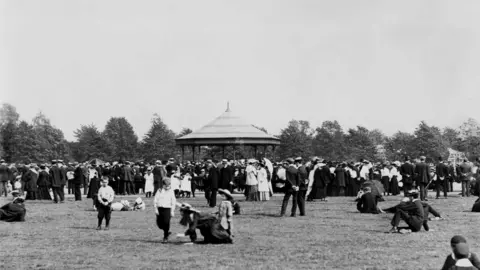 Getty Images
Getty ImagesAlthough there has been a small village in the area for hundreds of years, Moss Side really started growing in the late 1800s as Manchester's cotton industry grew.
"Manchester as a city has a longer history of multiculturalism than we might already assume," says Dr Charlotte Wildman, who is an expert on modern history in the North West and lecturer in modern British history at the University of Manchester.
"It's got a very rich culture celebrating many different nationalities and faiths, and Moss Side is an example of that."
Around 100 years ago, Moss Side became a centre for immigrants - particularly from Ireland and Poland.
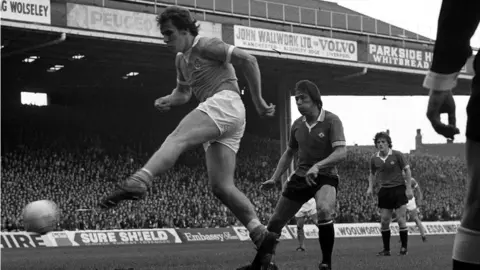 PA
PAThe arrival of many people from the British Empire after World War Two brought a new wave of immigrants to the area.
It became a hub for African-Caribbean arrivals, who became known as the Windrush generation.
Joined by Indian immigrants around the same time, over the next few decades the area became a thriving cultural centre for Commonwealth migrants.
"It had a really strong working class community and identity," Dr Wildman tells Newsbeat.
"People were very happy there and reminisce very fondly about that period."
A change in reputation
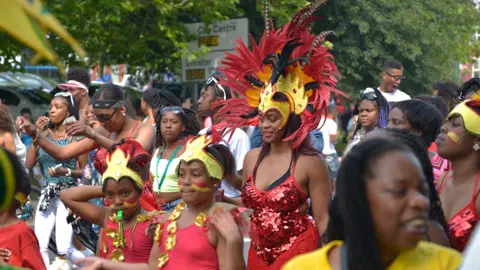 Getty Images
Getty ImagesDr Wildman says that throughout the 1950s and 60s Moss Side was "a flourishing suburb where diversity is celebrated".
"You don't see the racial tensions in Manchester that you see elsewhere... it's a city that is built on migration."
Evidence of this is Manchester Carnival, which started in 1972 when a group of people from the Caribbean threw an impromptu street party.
This year's carnival attracted 16,000 people.
But this was also around the time when things began to change in the area.
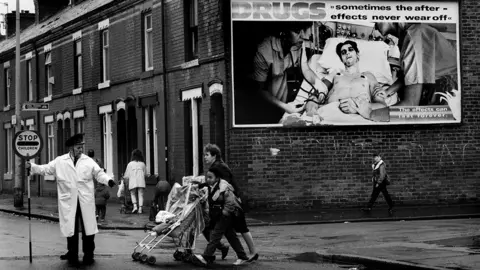 Getty Images
Getty ImagesThere was a rise in poverty in the whole of the North West in the 1970s, as a lot of jobs moved to London and old industries began to disappear.
A programme of "slum clearance" took place, where lots of working class people's houses in the area were demolished.
"This forces people who are very happy to be in a place like Moss Side into different suburbs, away from their networks, churches, extended families and friends.
"So you see a very sudden rupture of strong communities," says Dr Wildman.
A community breaks - and then rebuilds
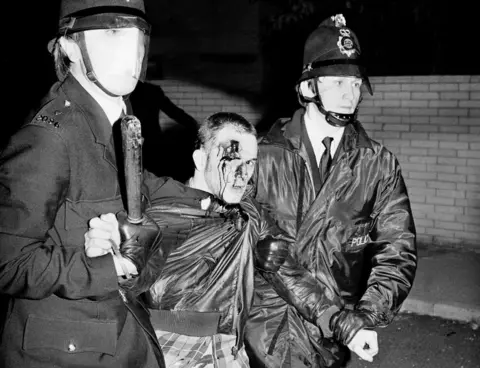 Getty Images
Getty Images"That lack of community contributed to the social problems that you see," she adds.
"It's those kinds of problems that lead to gang violence, because there's a chasm there.
"If you don't have a job, it causes more people to turn to crime. But also with the lack of community, you don't have those informal barriers in place that stop anti-social behaviour."
Throughout the 1970s and 80s, gang violence increased, which earned the area the nickname of "gunchester".
In 1981, tensions broke into violent riots between Moss Side residents and the police.
 Getty Images
Getty Images"The gun violence continued into the 90s," says Dr Wildman.
But a dramatic change began.
Manchester Council has "worked really hard to make sure the area has moved away from its unfair reputation".
As well as spending money, "There's also been a push by the council to rebrand and encourage families and young professionals to live there".
It's worked, as more and more young people have moved to the area in recent years.
Moss Side today
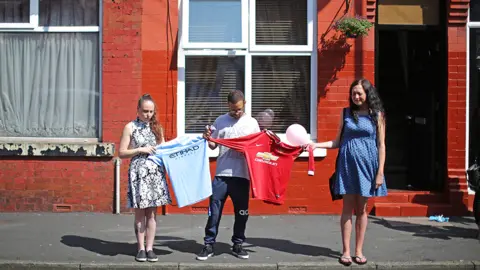 Getty Images
Getty ImagesThe reason the weekend's shooting is so shocking is precisely because of how far Moss Side has come in the last two decades.
Gun violence "used to be an almost a daily occurrence", former police officer Martin Harding told the BBC.
"It's another sign that some of the work in Moss Side - and neighbouring Hulme - is working."
Youth worker Kemoy Walker said he had been at another street party in Claremont Road - the same road where the shooting happened - on Saturday night.
"The party I was at was beautiful," he said.
"When I left there was lovely dancing. That's Moss Side, that's the culture. I'm in shock this morning."
